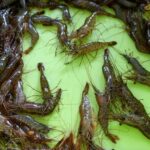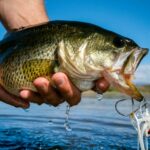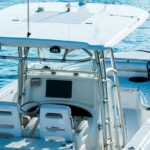Catching a trout is something every angler strives to do one day. Some may even see it as a rite of passage within the fishing community.
Luckily, this freshwater fish is relatively common, making it much easier to find one. However, hooking one for the first time isn’t always that easy, especially if you don’t have the right fishing rod and reel setup.
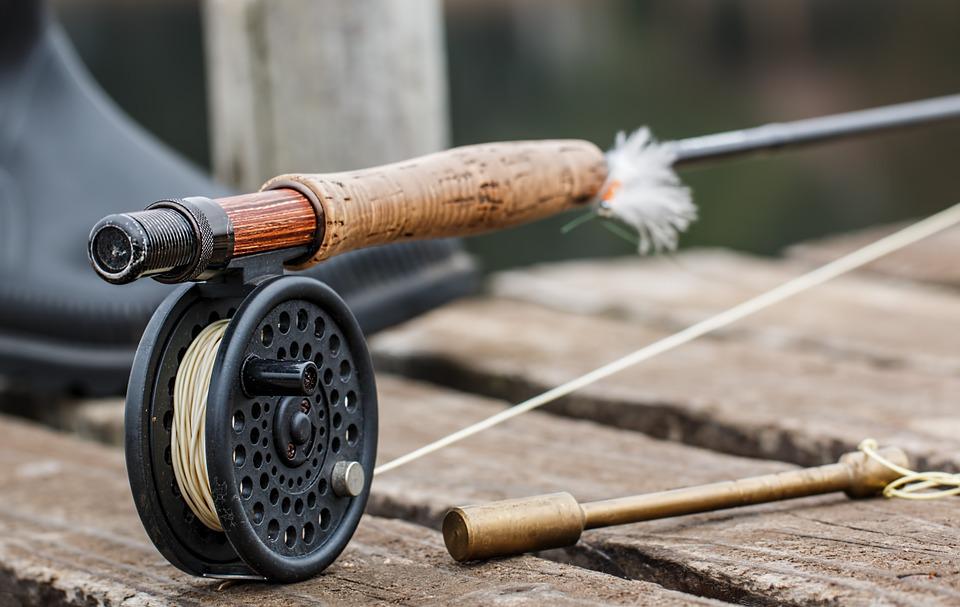
Targeting specific types of fish requires that little bit of extra effort when it comes to setting up and using the right sort of equipment to give yourself the best chance of success.
This is no different when catching a trout. In fact, it may even be more important.
If you’re struggling to work out which rod and reel you need to catch trout, don’t worry, you’re not alone.
Today, we’re going to run through the rod and reel setup you need to use. If you want the best chance to catch your first trout, make sure you read our guide thoroughly.
What Kind Of Fishing Rod Do You Need To Catch Trout?
Let’s start off with the kind of rod you need, which is arguably the most important part of your setup. If you’re hoping to catch a large number of trout, you’ll need to use a lightweight fishing rod.
While lightweight fishing rods don’t offer us as much sturdiness and strength, they are perfect for dropping in on an unsuspecting trout.
Trouts are known to be quite shy and anxious fish, making it very easy to scare them off with the slightest bit of noise. Therefore dropping in on them quietly is your best bet.
Lightweight fishing rods are used with light lines and lures. This makes it possible to sneak up on fish almost silently, allowing you to strike in an instant.
In terms of rod length, you should aim for a rod in the region of 7 feet long. This length of fishing rod can be used to catch varying sizes of trout from a distance, ensuring you don’t disturb the fish.
Spinning Rod
When it comes to the type of rod you should use to catch a trout, spinning rods are your best option. Spinning rods are a type of casting rod designed to work alongside spinning reels.
The spinning rod has a reel seat that points downwards on your bar handle.
As a result, the rod line guides are also situated along the bottom part, putting them on the same side as the reel.
The spine of most spinning rods tends to run along the highest part of the shaft. It is the spine of the casting pole that is better prepared for dealing with strain.
Setting Up Your Spinning Rod
Below you’ll find the best specs for setting up a good all-around trout fishing spinning rod:
- Spinning rod size: 6 – 7 feet (no longer).
- Power: Ultralight or light.
- Action: Moderate – fast.
- Reel size: 1,000 – 2,500.
A spinning rod length of 6 or 7 feet will be ideal as it suits most trout fishing scenarios. This size of rod is perfect for attempting to catch rainbow trout found in lakes and ponds.
It is also known to work well when catching wild trout found in streams and rivers.
In regards to the rod and its power, most anglers go for ultralight. This is also the rod power we would recommend.
Finding fish over 5 lbs in most fisheries is pretty rare, therefore, you’ll find catching average-sized trout (1 to 2 lbs) with an ultra-lightweight setup a lot more enjoyable than that with heavier gear.
In addition to ultralight power, you’ll also want to use a lightweight line (2 to 6 lbs). This lighter line is necessary if you want to lure in shyer trout.
We’ll touch on the reel size you need next!
What Kind Of Fishing Reel Do You Need To Catch Trout?
Choosing the right type of reel is also super important when it comes to giving yourself the best chance of success.
Ideally, you should aim for a 1,000 to 2,500 reel size. This size of the reel is fairly light, especially if you compare it to other standard reel sizes, but it is perfect for trying to catch trout.
This lighter weight keeps the weight of the rod down, making you more stealthy and less likely to scare away any nervous trout.
Holding less line and not being as quick can be a problem in some fishing scenarios, but this is fine when trout fishing.
Besides, you don’t want to be too far away from your catch when trout fishing.
Having said that, there are some scenarios where a larger reel and rod may be needed. This will depend on your circumstances.
For example, if you’re on the water, you can use a shorter rod and reel. If you’re at the edge of the lake, you’ll probably benefit from something that offers more casting distance.
Bear in mind though, that lighter lines and lures will always be better suited to trout fishing.
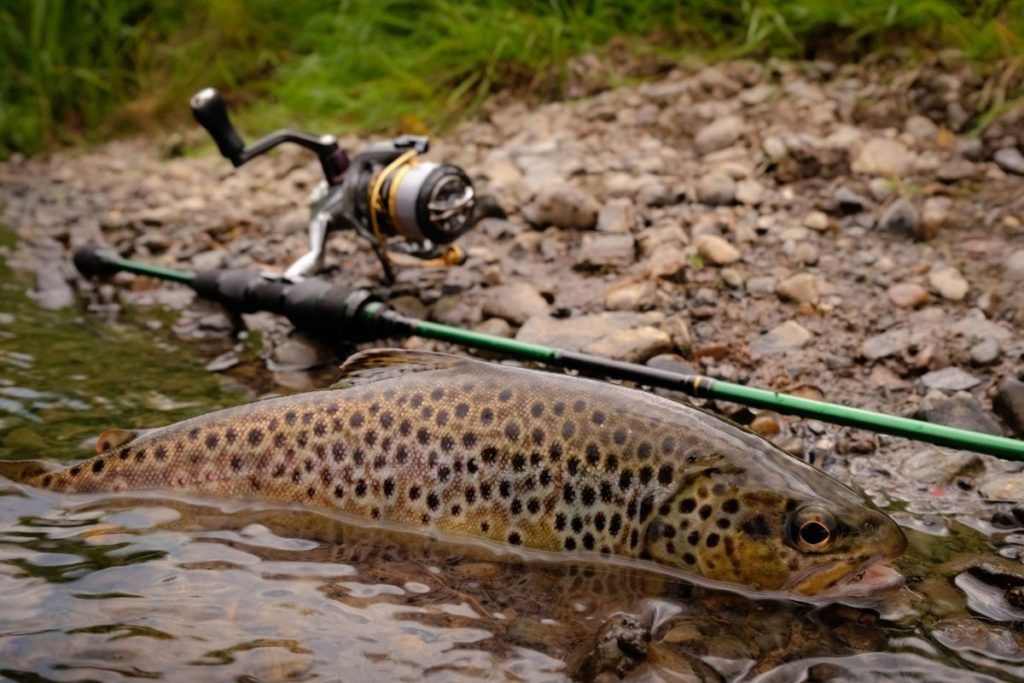
Spinning Reel
When you come to pick the right type of reel for trout fishing, the option you need to go for is a spinning reel.
This type of reel has an open face and features a reliable spool and spinning arm, which when rotated, effortlessly operated the line and spool.
To set the fishing line free from the reels spool, the spinning reels metal arm is separated. This allows the fishing line to be successfully pulled off by the weight of the bait.
The best way to utilize a spinning reel is to join it with a spinning pole. It should then be situated on the downside of your bar handle. This will leave the spinning reel hanging under the handle.
The two best things about spinning reels are that they are better suited for a lightweight setup and are very straightforward to use. This makes them a very popular choice amongst anglers.
Setting Up Your Spinning Reel
As we mentioned previously, you should aim to use a 1,000-sized ultralight reel or a larger 2,000 to 2,500 size reel.
The lighter your reel is, the lighter your overall setup will be. The larger the reel is, the larger your spool will be and the heavier the load will be.
Typically, if you’re planning on trout fishing in lakes, you should choose a longer bar and a greater reel. If you’re fishing in smaller bodies of water or streams, you can pick a lighter reel as you won’t need to cast as far.
Picking Your Trout Fishing Line
You have three different types of lines to choose from when trout fishing. Those options are monofilament, fluorocarbon, and braided. Each one is a solid option for trout fishing but two are arguably the better choices.
Our recommendation is a monofilament line, especially if you’re new to buying fishing lines and need a budget-friendly option. This type of line is much easier to get hold of and doesn’t cost much at all.
Having said that, a lot of experienced anglers prefer to use a braided line. This type of line is much stronger and quite rigid, offering less flexibility.
This helps pull the trout in as soon as they slightly touch the line. This sort of precision is what is needed when catching trout.
It is worth noting that braided lines are much thicker and much easier to spot. This could make it take longer for you to get a bite.
What Is The Best Setup For Trout Fishing In Rivers And Streams?
If you’re planning on fishing in rivers and streams, you can use a shorter rod (up to 6 feet long) as this will allow you to cast more successfully under hanging trees and around the river banks’ shrubbery. You can also be more accurate with your casting.
You will probably prefer to use a smaller 1,000-size reel in this environment too. This will help reduce the overall weight of your setup.
What Is The Best Setup For Trout Fishing In Lakes?
You are more likely to cast your line further when trout fishing in lakes. As a result, you’re probably going to want to use a longer rod (7 feet in length).
A longer rod will help you cast further. It will also give you more control of your lure.
You will also want to use a larger spinning reel. A 2,500-size reel should do the trick. This will give you greater success when casting the line out further, improving your chances of catching some trout.
Final Thoughts
Using the right setup when fishing for trout is incredibly important. By ensuring you have the right equipment, set up correctly, you dramatically increase the chances you have of catching trout.
In this post, we have shown you exactly what you need to catch trout and how to set it up. Now all you need to do is get your gear ready and head out to your nearest fishery, lake, or stream and try your hand at trout fishing.
Remember to stay quiet if you don’t want to scare those shy trout away.
- Do You Need An Indicator For Nymph Fishing? - November 16, 2023
- Fishing Safety Tips For Families - September 25, 2023
- What Is The Best Time To Night Fish At A Lake? - September 18, 2023



![Kayak Fishing for Beginners [10 Tips for a Successful Trip] fishing kayak moored on a beach](https://irvinelake.net/wp-content/uploads/2022/12/kayak-fishing-for-beginners-150x150.png)

